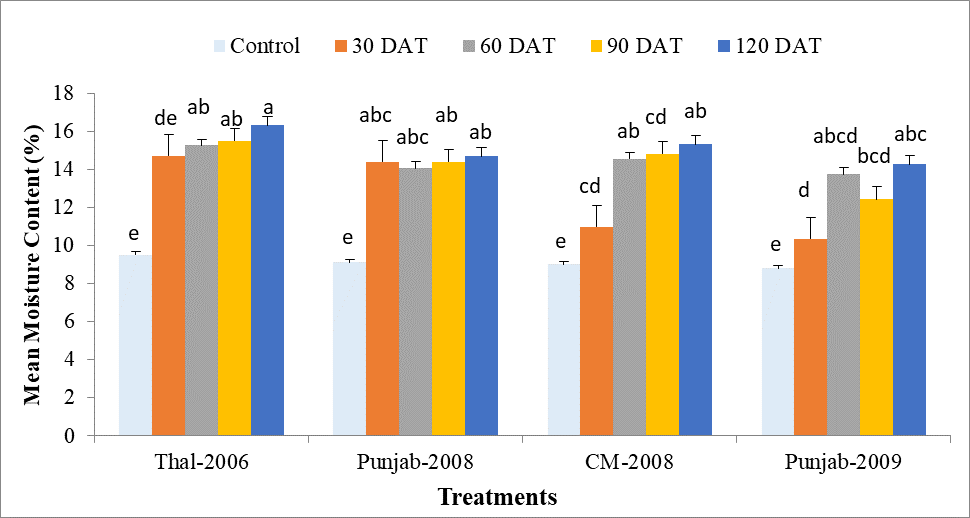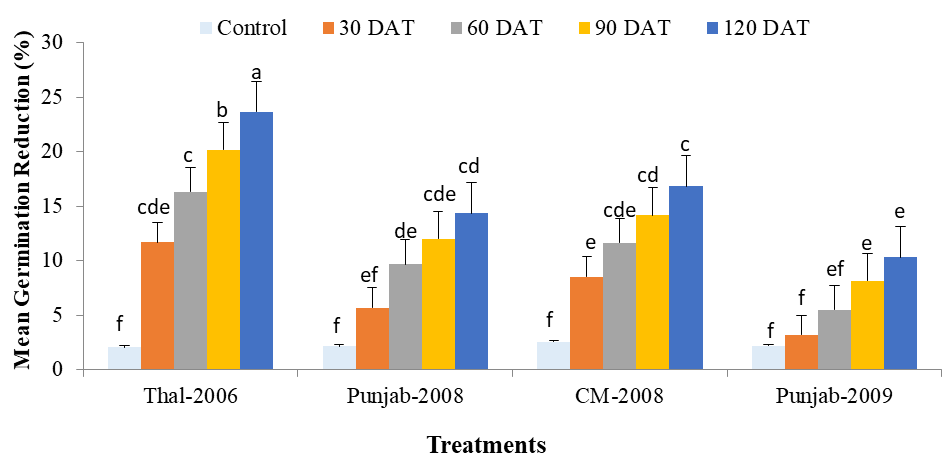Relative Susceptibility of Chickpea Varieties to Callosobruchus chinensis L. (Coleoptera: Bruchidae) and Appraisal of its Quantitative and Qualitative Losses
Relative Susceptibility of Chickpea Varieties to Callosobruchus chinensis L. (Coleoptera: Bruchidae) and Appraisal of its Quantitative and Qualitative Losses
Zaigham Abbas1*, Abu Bakar Muhammad Raza1, Muhammad Zeeshan Majeed1, Muhammad Anjum Aqeel1, Talha Nazir2
Mean weight loss (%) of grains of different chickpea varieties incurred by the infestation of C. chinensis determined at different days after treatment (DAT). Different letters at top of treatment columns indicate significant difference among them (LSD test at α = 0.05). Columns represent mean percent mortality ± SE (n = 5) (See Table 1).
Mean moisture contents (%) of grains of different chickpea varieties incurred by the infestation of C. chinensis recorded at different days after treatment (DAT). Different letters at top of treatment columns indicate significant difference among them (LSD test at α = 0.05). Columns represent mean percent mortality ± SE (n = 5) (See Table 2).
Mean germination reduction (%) of grains of different chickpea varieties incurred by the infestation of C. chinensis recorded at different days after treatment (DAT). Different letters at top of treatment columns indicate significant difference among them (LSD test at α = 0.05). Columns represent mean percent mortality ± SE (n = 5) (see Table 3).














